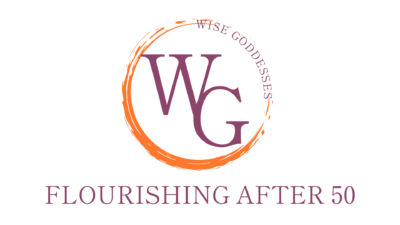I remember my workout schedule in my 20s and 30s. Take a day off?…unheard of, to say the least. Have lighter days, what some nowadays term “recovery”, interspersed with those sweat drenched, can’t move a muscle workouts?…no. Every time I put on my tights and tennis shoes it was all out effort. The only thing I conceded was every other day weight training sessions. I ended up with a serious back problem in my early 40s and took up yoga. That and finding an excellent chiropractor saved me. And, as I continue to age I have crafted a much better workout regimen. The question is, have you??
FACE THE FACTS
As you approach age 50 and beyond your workouts may begin to feel harder, there’s more lingering muscle soreness and/or you are more fatigued after exercising. Why does muscle recovery get harder with age?
- Losing Muscle Fibers – The aging process causes the size and number of muscle fibers to dwindle. This is known as sarcopenia. While strength training can slow down this process, as well as consistently exercising prior to approaching middle age, your muscles will naturally change over decades of time.
- Weakening Brain-Muscle Connection – Your brain and muscles work together to move efficiently and effectively. Quite simply, fewer neuromuscular connections means more difficulty moving and lifting weights efficiently and effectively.
- Deteriorating Connective Tissues – Your tendons, ligaments, blood vessels and other tissues in the arteries and surrounding your joints start to break down with age. Why? You naturally start producing less collagen and elastin as you age. These are 2 proteins that allow your body the flexibility it needs to stretch and return to its original state as it moves. So, changes in muscle fibers coupled with less flexible connective tissues means tighter muscles and greater chance for injury.
- Healing Process Delayed – When you workout you are essentially stressing and breaking down your body to make it even stronger. So, your inflammatory response is triggered to send more blood and needed nutrients to the area so the healing process can begin. With age the inflammatory response is slowed so your recovery is delayed.
WISE RECOVERY TECHNIQUES

About now are you saying, “It’s hell getting old.”? Here’s why that doesn’t have to be true. If you are currently sedentary, get moving! If you have a consistent exercise routine, keep it! BUT, everyone needs to add smart recovery tools to their workout toolbox. AND, let go of the mindset that if you aren’t moving all out all the time you are weak. YOU ARE WISE!
- Build In Active Recovery Days – Please don’t think of a “recovery day” as one where you sit around and do nothing. Let’s say you did a weight training session on Monday. Maybe practice yoga on Tuesday, go for a walk on Wednesday and possibly get your second resistance day in on Thursday or Friday. Swimming, a relaxed bike ride or simply cleaning your house are other ideas to consider.
- Remember To Eat & Hydrate – Eating protein is important at any age but more so when you are over 50 and workout regularly. Carbohydrates are needed to replenish your muscles’ glycogen (energy) stores after exercise. So, eating before and after workouts helps with recovery as well as keeps your metabolism humming. Ideas to try include Greek yogurt with berries, whole grain toast with peanut butter and bananas or a smoothie with greens, coconut water and protein powder. And, continually drink water throughout the day, even if it means more bathroom breaks.
- Stretch After Workouts – You should focus on areas you worked plus any muscles that are continually stiff on you. Hold each stretch at least 30 seconds. Don’t forget about active recovery yoga days either.
- Sleep Well – Deep sleep enables the release of a hormone that boosts muscle mass and helps repair cells and tissues. For some peeps this is a hard ask. And, you guessed it, the older you get the harder it can be to get a good night’s sleep. Join my email list, and I’ll send you sleep tips which includes a sleep meditation.
MORE OPTIONS
There are other things you might consider trying. Have you heard of cryotherapy? It reduces inflammation and improves blood flow. The more costly version is sitting or standing in a cryochamber that’s been frigidly cooled. Sitting in an ice bath or cold shower for a few minutes will work too.
Massage is another alternative for workout recovery. It could be from a professional, foam rolling or self-given with a tennis ball. Thai Bodywork is a wonderful combo of massage and stretching that I highly recommend. You can check out more about this modality here.
Heat therapy such as hot tubs and saunas may work for you. However, heat and cold can be detrimental for certain medical conditions. Always good to check with your medical professional before attempting either.
Finally, compression garments are available for all major body parts. They help improve circulation and reduce inflammation by slightly squeezing muscles.
THE BOTTOM LINE

Recovery is just another word for self-care. If you don’t practice it in your life it will catch up to you at some age. It could be a muscle tear, a broken bone or a chronic disease from all the physical and emotional stress you put yourself through. No one is immune to aging. The wise peeps just know how to age well!

